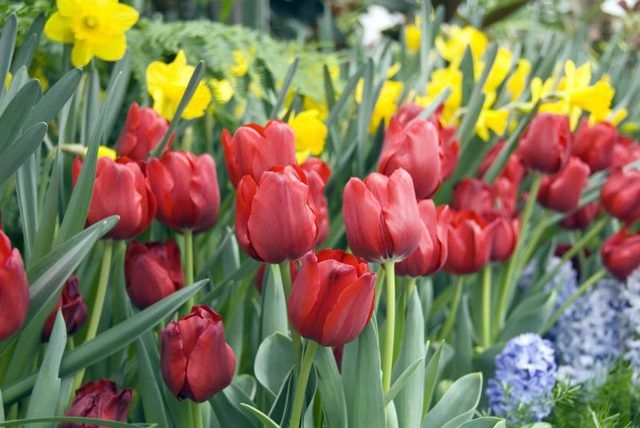Bulbs
Flower Basics
Flower Beds & Specialty Gardens
Flower Garden
Garden Furniture
Garden Gnomes
Garden Seeds
Garden Sheds
Garden Statues
Garden Tools & Supplies
Gardening Basics
Green & Organic
Groundcovers & Vines
Growing Annuals
Growing Basil
Growing Beans
Growing Berries
Growing Blueberries
Growing Cactus
Growing Corn
Growing Cotton
Growing Edibles
Growing Flowers
Growing Garlic
Growing Grapes
Growing Grass
Growing Herbs
Growing Jasmine
Growing Mint
Growing Mushrooms
Orchids
Growing Peanuts
Growing Perennials
Growing Plants
Growing Rosemary
Growing Roses
Growing Strawberries
Growing Sunflowers
Growing Thyme
Growing Tomatoes
Growing Tulips
Growing Vegetables
Herb Basics
Herb Garden
Indoor Growing
Landscaping Basics
Landscaping Patios
Landscaping Plants
Landscaping Shrubs
Landscaping Trees
Landscaping Walks & Pathways
Lawn Basics
Lawn Maintenance
Lawn Mowers
Lawn Ornaments
Lawn Planting
Lawn Tools
Outdoor Growing
Overall Landscape Planning
Pests, Weeds & Problems
Plant Basics
Rock Garden
Rose Garden
Shrubs
Soil
Specialty Gardens
Trees
Vegetable Garden
Yard Maintenance
Tulip Flower Description
Tulip Flower Description. Tulips (Tulipa spp.), a large group of approximately 100 species, include over 3,000 varieties of flowering plants. The flowers vary greatly in size, shape and form, depending on the cultivar. Tulips thrive in U.S. Department of Agriculture plant hardiness zones 3 through 8. Although they are perennials, some gardeners...

Tulips (Tulipa spp.), a large group of approximately 100 species, include over 3,000 varieties of flowering plants. The flowers vary greatly in size, shape and form, depending on the cultivar. Tulips thrive in U.S. Department of Agriculture plant hardiness zones 3 through 8. Although they are perennials, some gardeners choose to grow tulips, especially the hybrid varieties, as annuals because their blooms are not always as spectacular the second year.
Tulip Blossoms
Many tulip flowers are cup-shaped, but some cultivars have a star or bowl form. All tulip flowers have six petals, and the petals can be smooth, fringed or ruffled. The blossoms may be single or double, and the flowers come in nearly every color except true blue. Some tulip blossoms are single-colored, while others are striped, swirled, flamed from the bottom or margined. The plants range in size from 4 to 24 inches in height, with an upright form. Their leaves are usually medium green in color, with a lance or oval shape. Tulip blossoms open during the day but close in the evening. These plants are phototropic, meaning they bend toward the light.
Blooming Classifications
Tulips are grouped according to whether they flower early, mid-season or late. Species tulips, for example, bloom early in the season around March or early April, while Darwin hybrids bloom mid-season, in April and at the beginning of May. Parrot, Double Late and Lily-Flowered tulips are late bloomers. They usually do not begin blooming until May.
Scented Cultivars
Most tulips are not especially aromatic, but some cultivars such as "Couleur Cardinal," a dark red variety, "Generaal de Wet," a soft orange flower, and "Apricot Beauty" are sweetly fragrant as well as showy. Most fragrant tulips are early-blooming varieties, but several cultivars such as "Hollandís Glory," a 2-foot-tall cultivar with large reddish-orange blossoms, and "Silverstream," a creamy-white blossom with pink-edged leaves, bloom in mid-season.
Bulbs and Root System
Tulips grow from tunicate bulbs. This type of bulb has a thin, papery covering on the outside that protects the inner storage tissue from injury. Each bulb produces one flower. The center of the bulb holds the developing flower bud, and is surrounded by the developing leaf and leaf scale. The roots grow from the bottom of the bulb, called the basal plate. Lateral buds grow just above the basal plate. These lateral buds are smaller bulbs called bulblets. The bulblets eventually produce new tulip plants.
Plant Structure
All tulips have a perianth composed of six petals and six sepals. Sepals are the small leaf-like structures at the bottom of the flower that once protected the flower bud. Tulips are classified as perfect and complete flowers, which indicates they have both male and female parts. Each blossom contains six male reproductive organs called stamens. Stamens are composed of a filament topped by a pollen sac called an anther. Each flower also contains a three-lobed female part called a pistil. Inside the pistil, a tube called a style connects an ovary to a stigma, a receptacle that collects the pollen during the fertilization process. Birds, insects and wind carry the pollen from the anther to the stigma. Once fertilized, fruit and seeds form inside the ovary.